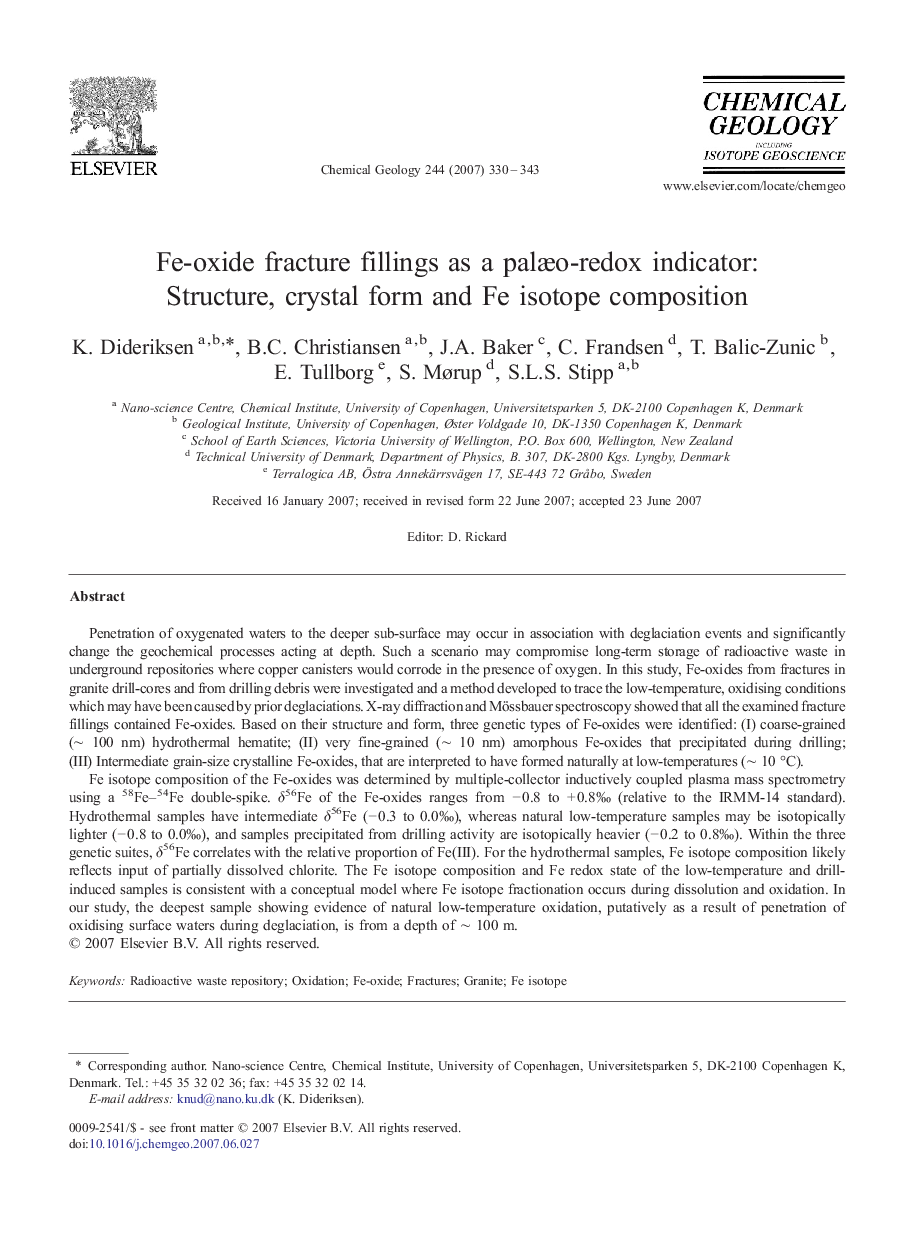| Article ID | Journal | Published Year | Pages | File Type |
|---|---|---|---|---|
| 4701067 | Chemical Geology | 2007 | 14 Pages |
Abstract
Fe isotope composition of the Fe-oxides was determined by multiple-collector inductively coupled plasma mass spectrometry using a 58Fe-54Fe double-spike. δ56Fe of the Fe-oxides ranges from â 0.8 to + 0.8â° (relative to the IRMM-14 standard). Hydrothermal samples have intermediate δ56Fe (â 0.3 to 0.0â°), whereas natural low-temperature samples may be isotopically lighter (â 0.8 to 0.0â°), and samples precipitated from drilling activity are isotopically heavier (â 0.2 to 0.8â°). Within the three genetic suites, δ56Fe correlates with the relative proportion of Fe(III). For the hydrothermal samples, Fe isotope composition likely reflects input of partially dissolved chlorite. The Fe isotope composition and Fe redox state of the low-temperature and drill-induced samples is consistent with a conceptual model where Fe isotope fractionation occurs during dissolution and oxidation. In our study, the deepest sample showing evidence of natural low-temperature oxidation, putatively as a result of penetration of oxidising surface waters during deglaciation, is from a depth of â¼Â 100 m.
Related Topics
Physical Sciences and Engineering
Earth and Planetary Sciences
Geochemistry and Petrology
Authors
K. Dideriksen, B.C. Christiansen, J.A. Baker, C. Frandsen, T. Balic-Zunic, E. Tullborg, S. Mørup, S.L.S. Stipp,
